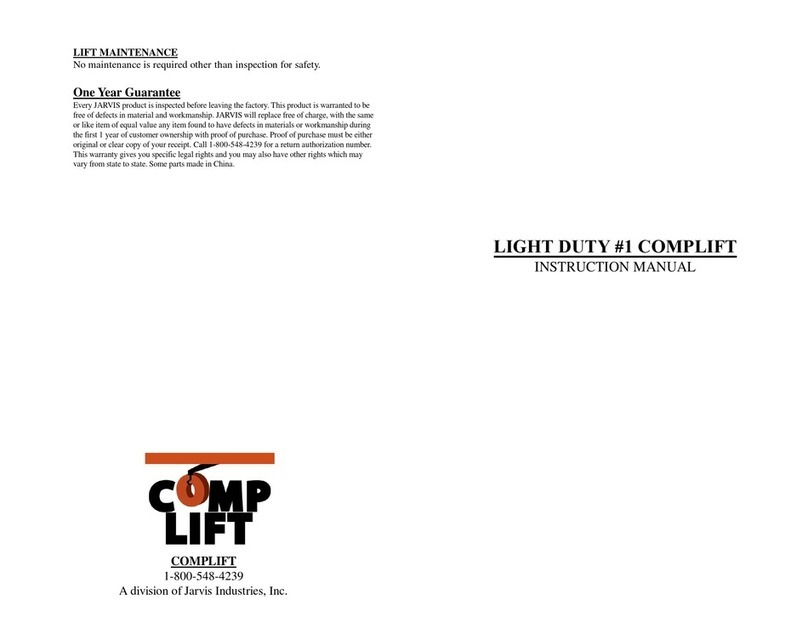
Owner and/or Operator Responsibility
The owner and/or operator shall study the product instructions and retain them for
future reference.
Operation
The owner and/or operator shall have an understanding of the product and safety
operating instructions before operating theLIFT. Safety information shall be
emphasized and understood. If the operator is not fluent in English, the product and
safety instructions shall be read to and discussed with the operator in the operator’s
native language by the purchaser/owner or his designee, making sure that the operator
comprehends their contents.
Maintenance
The LIFT shall be maintained in the accordance with the product instructions.
Inspection
(a) Visual inspection shall be made before each use of the LIFT by checking for
abnormal conditions, such as cracked welds, leaks, and damaged, loose, or
missing parts.
(b) Other inspections shall be made per product operating instructions.
(c) Each LIFT shall be inspected immediately if the lift is believed to have been
subjected to an abnormal load or shock. It is recommended that this inspection be
made by a manufacturer’s or supplier’s authorized repair factility.
(d) Owners and/or operators should be aware that repair of this equipment may
require specialized knowledge and facilities. It is recommended that an annual
inspection of the LIFT be made by a manufacturer’s or supplier’s authorized repair
facility and that any defective parts, decals, or safety labels or signs be replaced with
maufacturer’s or supplier’s specified parts.
Damaged Equipment
Any LIFT that appears to be damaged in any way, is found to be worn or operates
abnormally SHALL BE REMOVED FROM SERVICE UNTIL REPAIRED. It is
recommended that necessary repairs be made by a manufacturer’s or supplier’s
authorized repair facility if repairs are permitted by the manufacturer or supplier.
2.
Alterations
Because of potential hazards associated withthis type of equipment, no alterations
shall be made to the products.
Attachments and Adaptors
Only attachments and/or adaptors supplied by the manufacturer shall be used.
- Study, understand, and follow all instructions before operating this device.
-This is a lifting device only.
- Do not exceed rated capacity.
- Use 3/4” plywood for soft surfaces.
- Failure to heed these markings may result in personal injury and/or property damage.
- No alterations to the LIFT shall be made to this product.
WARNING
!
INSTRUCTIONS FOR USE
Two persons recommened for assembly.
1. Assemble the four (4) legs into the socketsas shown in drawing. Secure with the bent pins
and cotter pins.
2. Insert the two (2) telescoping beam support into the leg assemblies.
3. Install the bent pin so that the telescoping beam support is at it’s lowest position.
4. With the leg assembly laying flat on theground lift the beam socket end only and install the
beam. Install bent pin. Install the trolley on the beam. Note orientation of socket. Repeat for
the other leg assembly.
5. Install the chain hoist.
6. Check all bent pins and cotter pins.
7. Adjust height as required.
8. Assembly is complete.
Telescoping
Beam Support
3.
Leg Socket
Leg
1/2” pin
10-places
Trolley
Telescoping
Beam Support
Hoist
Leg
Beam
Beam
Socket Beam
Socket




















